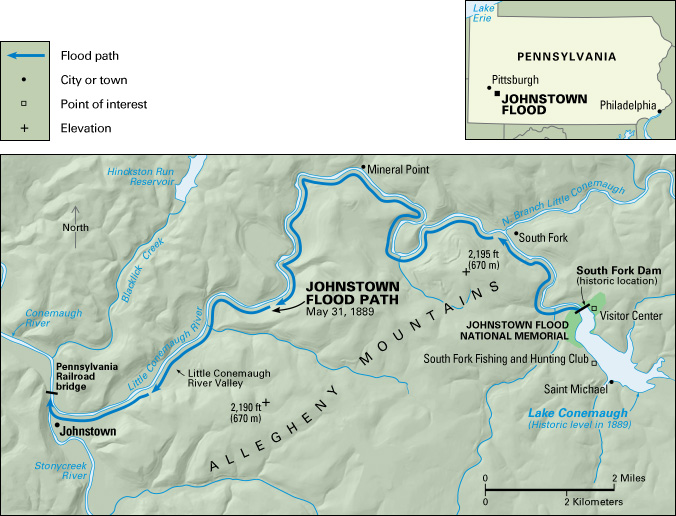Johnstown Flood was one of the worst disasters in United States history. In May 1889, a dam near Johnstown, Pennsylvania, burst during heavy rains. The dam’s failure caused a flood that killed more than 2,000 people and destroyed much of the city.

Johnstown lay at the junction of the Little Conemaugh and Stonycreek rivers in the Allegheny Mountains of southwestern Pennsylvania. The town had become an iron manufacturing center in the 1850’s. In 1853, engineers completed the South Fork Dam about 12 miles (19 kilometers) east of Johnstown. The dam created a lake that provided water for a nearby canal. The dam gave way in 1862, and the lake was allowed to drain. In 1879, the South Fork Fishing and Hunting Club purchased the property around the lake for a private resort. Club members included Andrew Carnegie, Andrew Mellon, and other wealthy businessmen from nearby Pittsburgh. The club quickly repaired the dam and allowed the lake to fill. They called it Lake Conemaugh.
On the afternoon of May 31, 1889, the dam collapsed after a heavy rainstorm. About 20 million tons (18 million metric tons) of water roared down the Little Conemaugh River Valley. A huge wall of water destroyed several small towns upstream from Johnstown. The flood carried wrecked buildings, rail cars, and other debris. In Johnstown, the flood took homes off their foundations and piled much of the wreckage against the Pennsylvania Railroad bridge. Dozens of people trapped in the wreckage died when the debris caught fire.
The flood killed more than 2,200 people. Clara Barton, the founder of the American Red Cross, took charge of relief work in the town. Today, Johnstown Flood National Memorial lies on the dry lakebed of Lake Conemaugh.
See also Johnstown .
